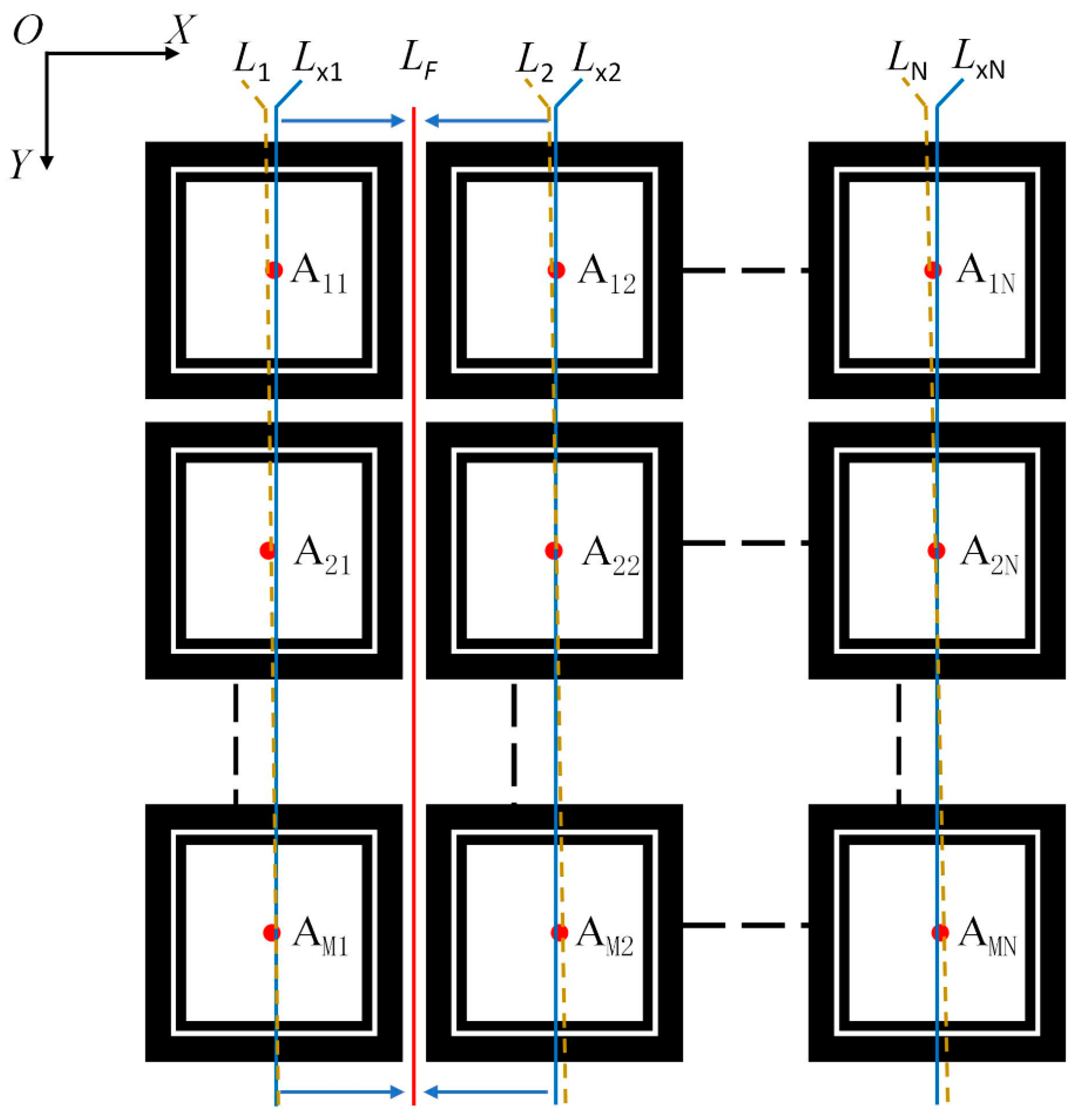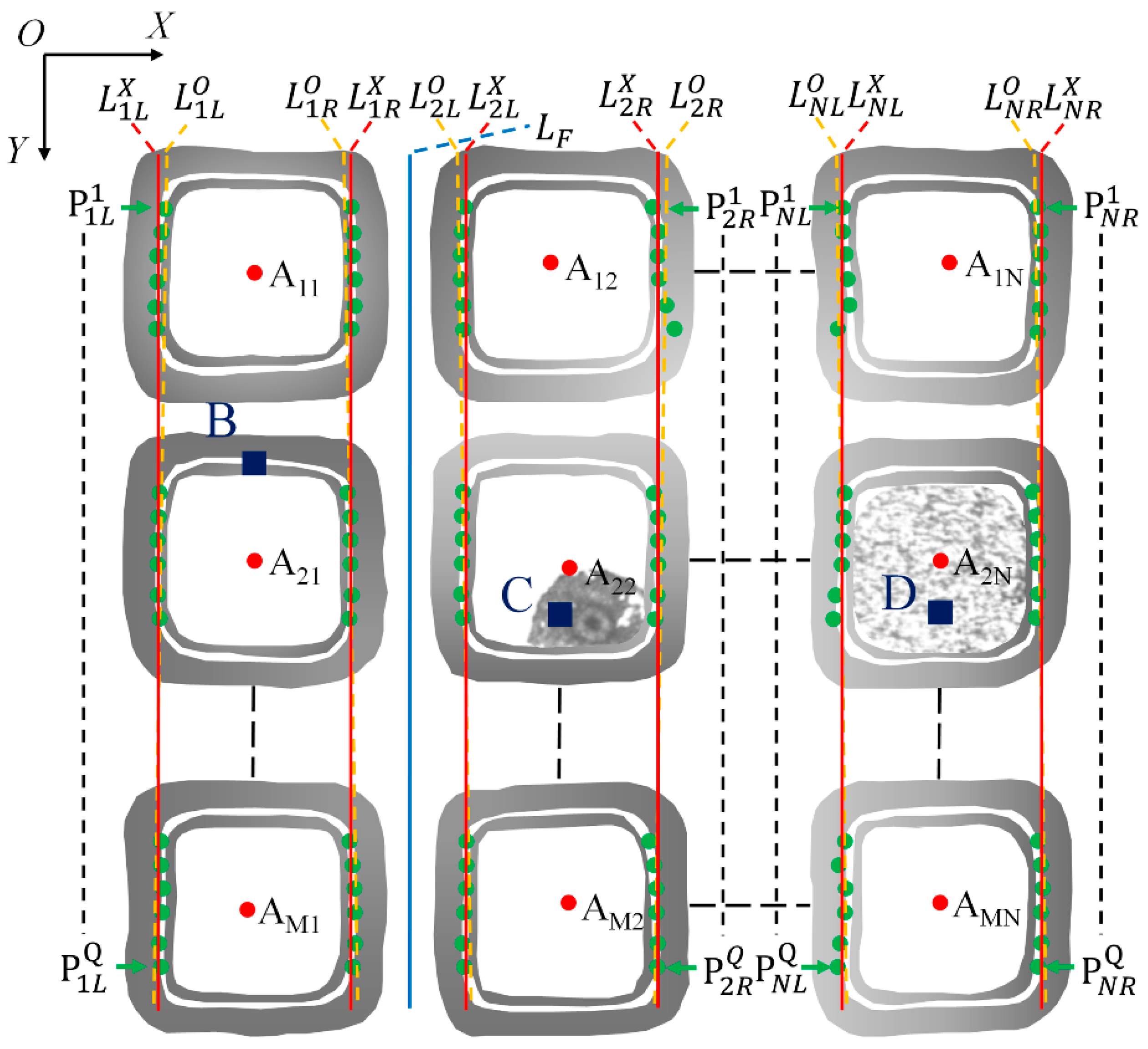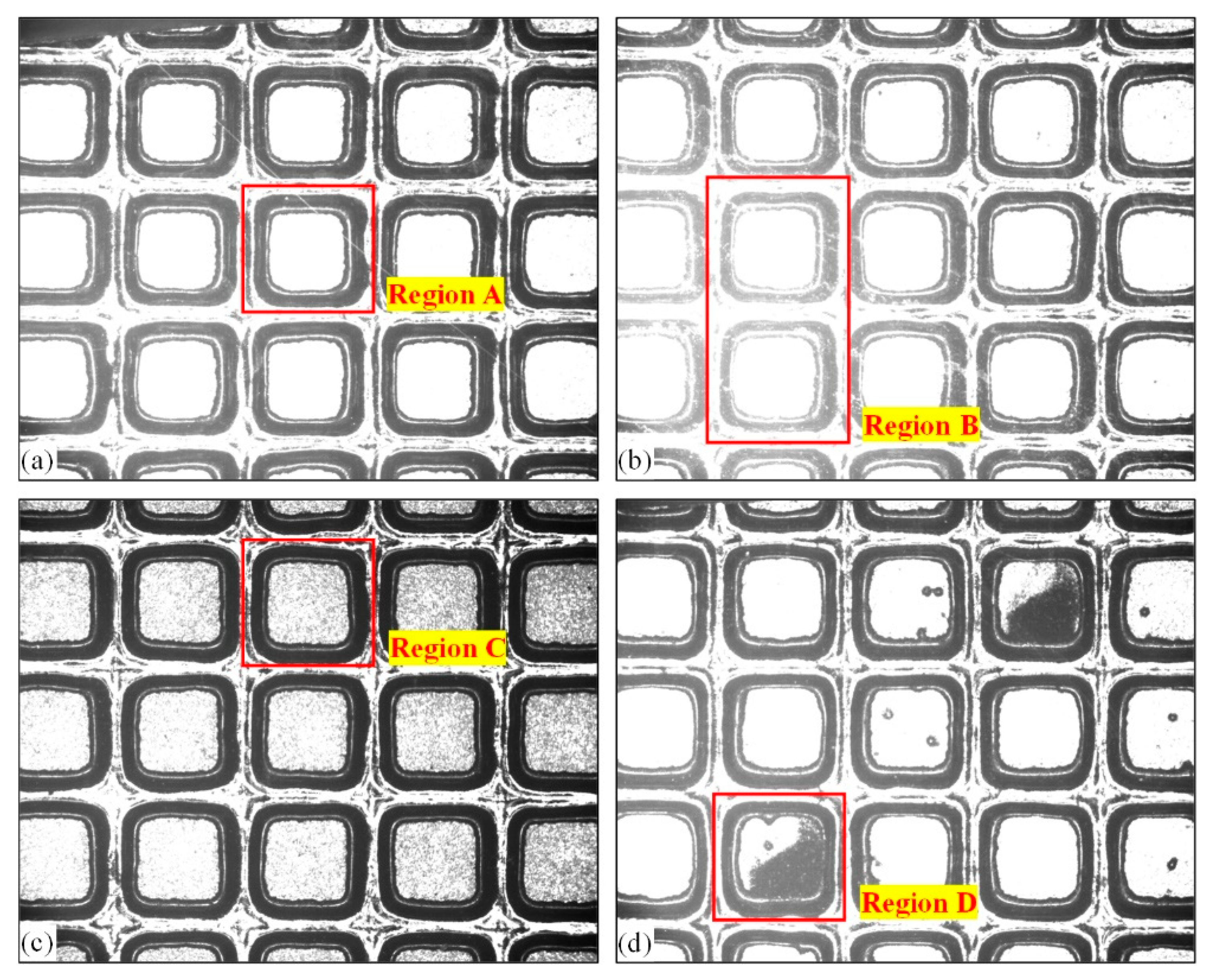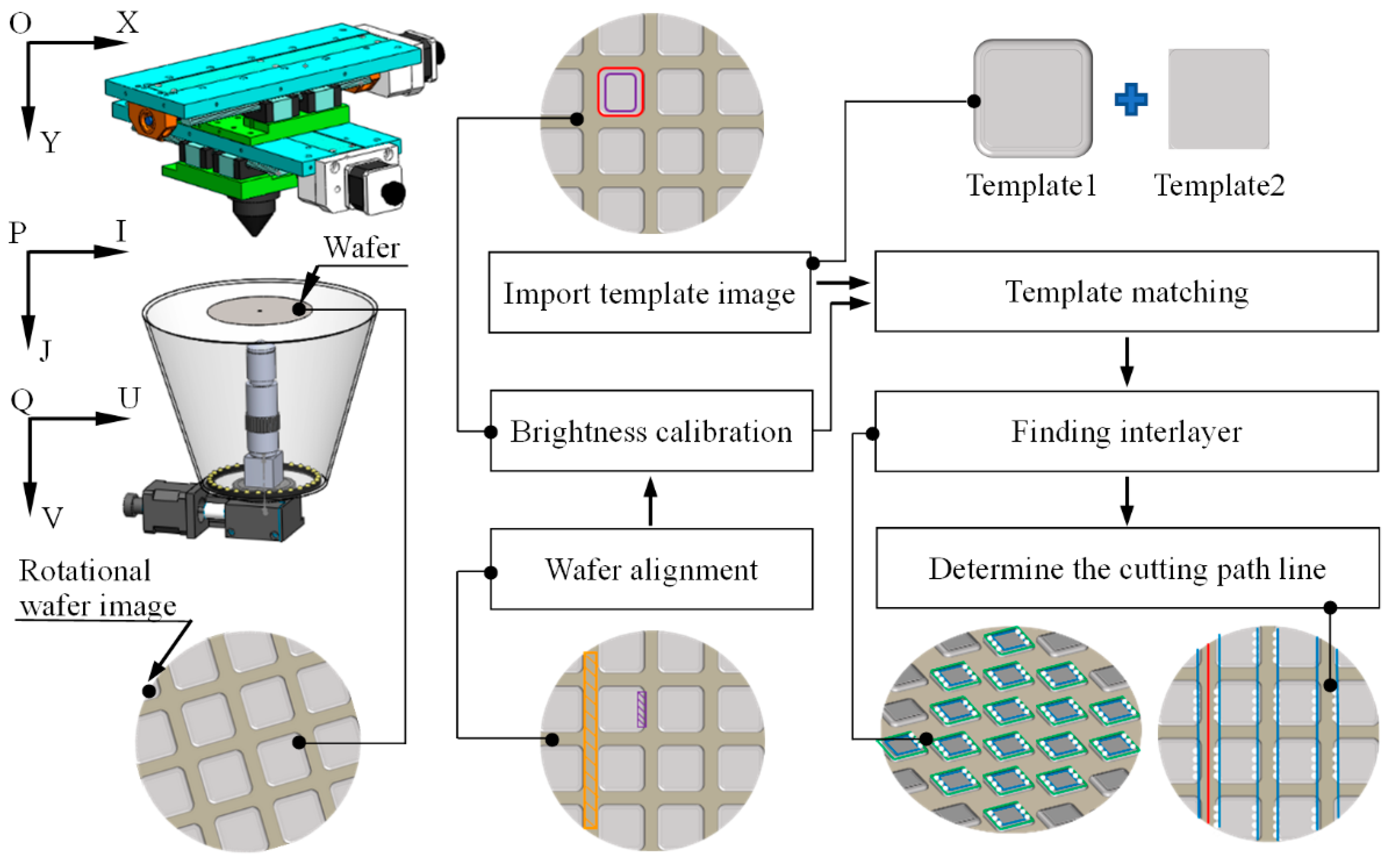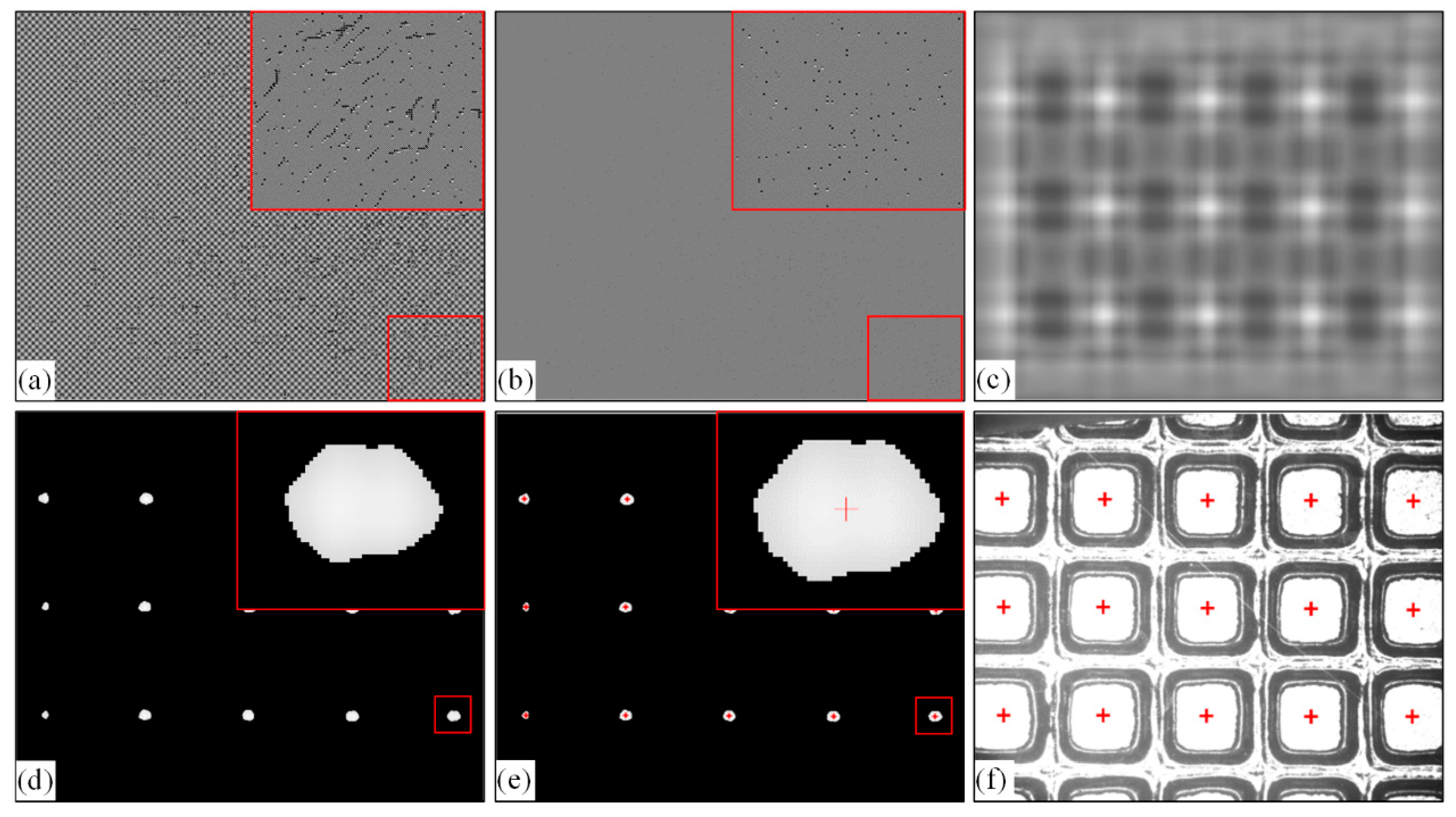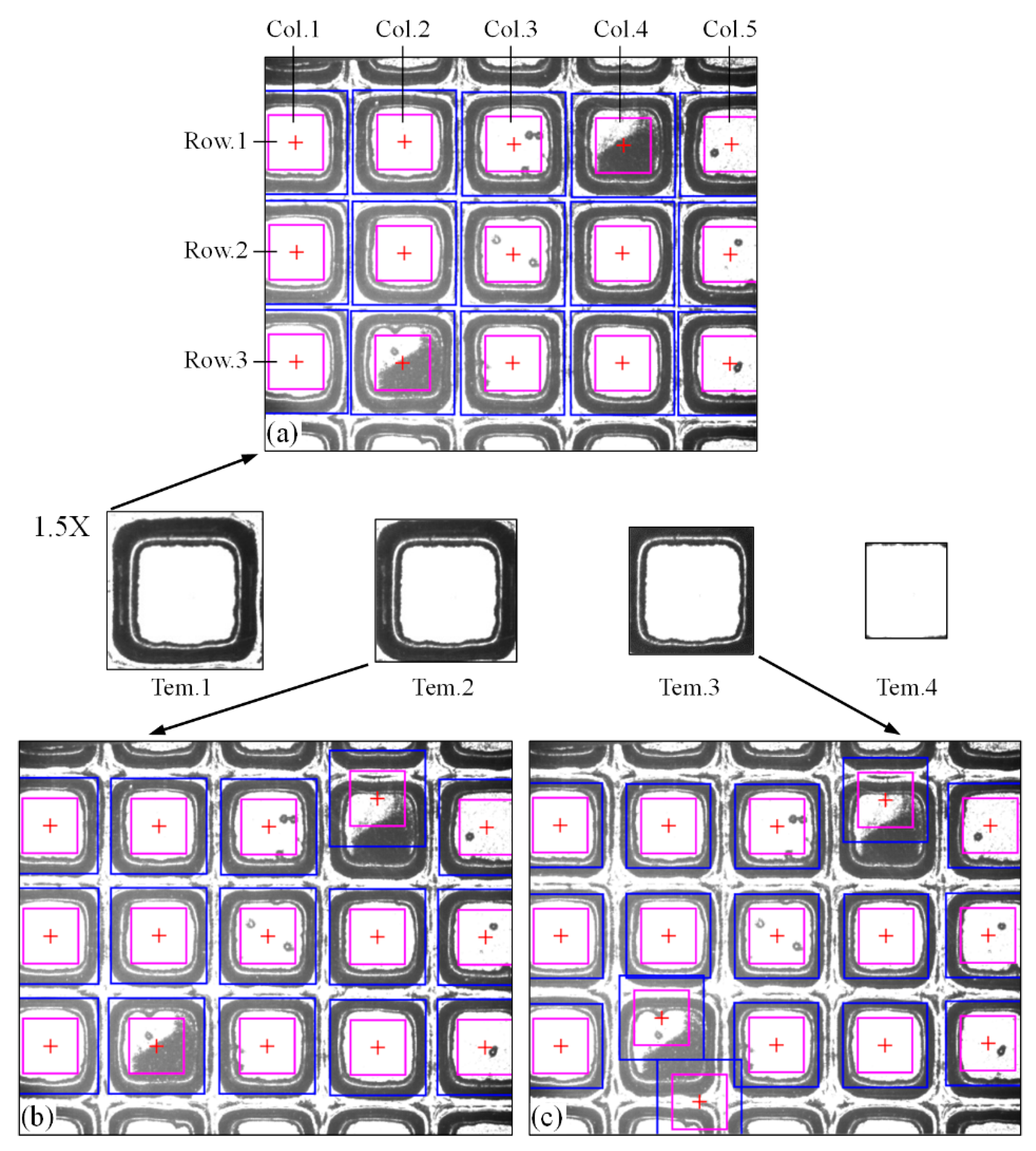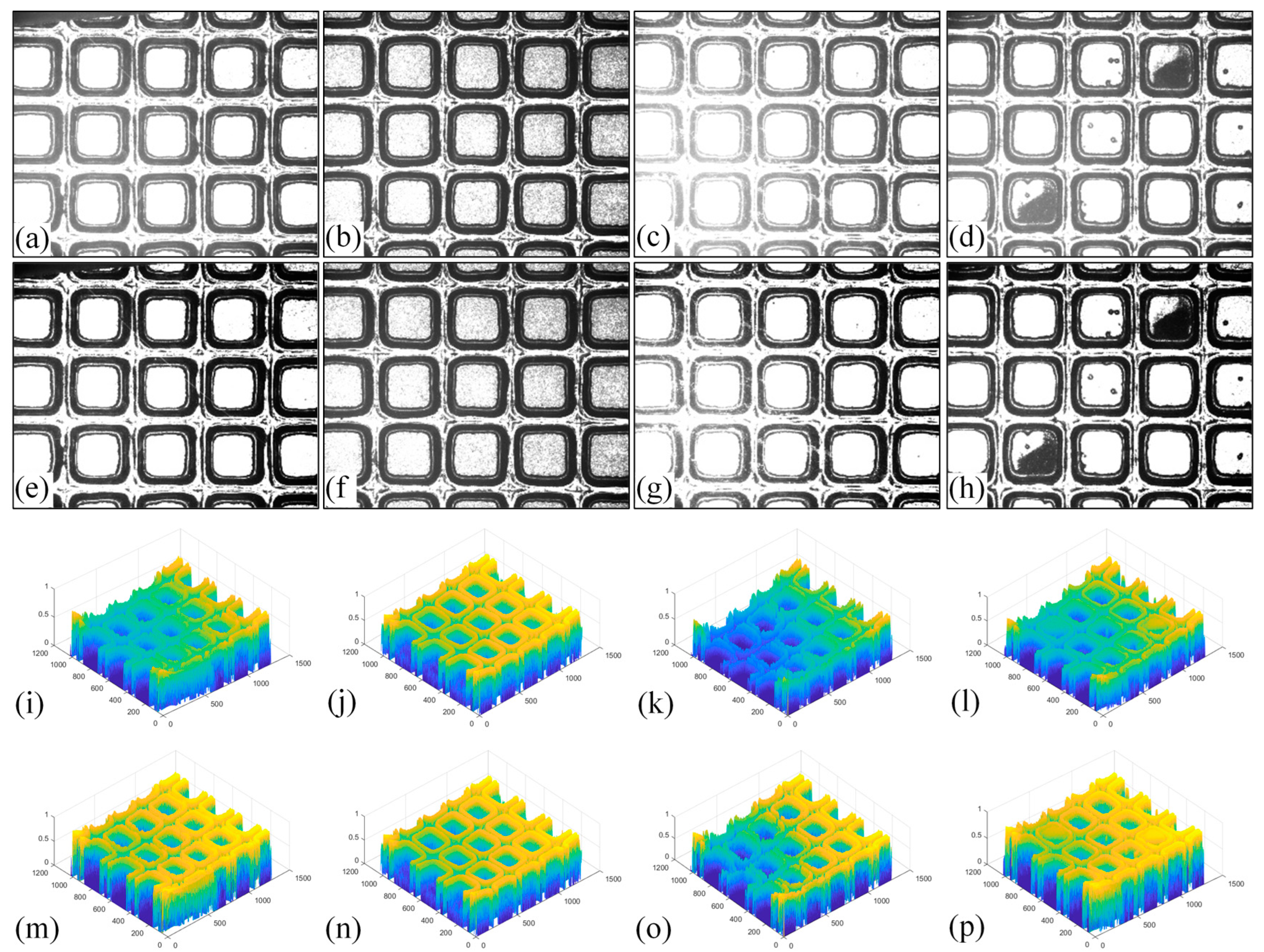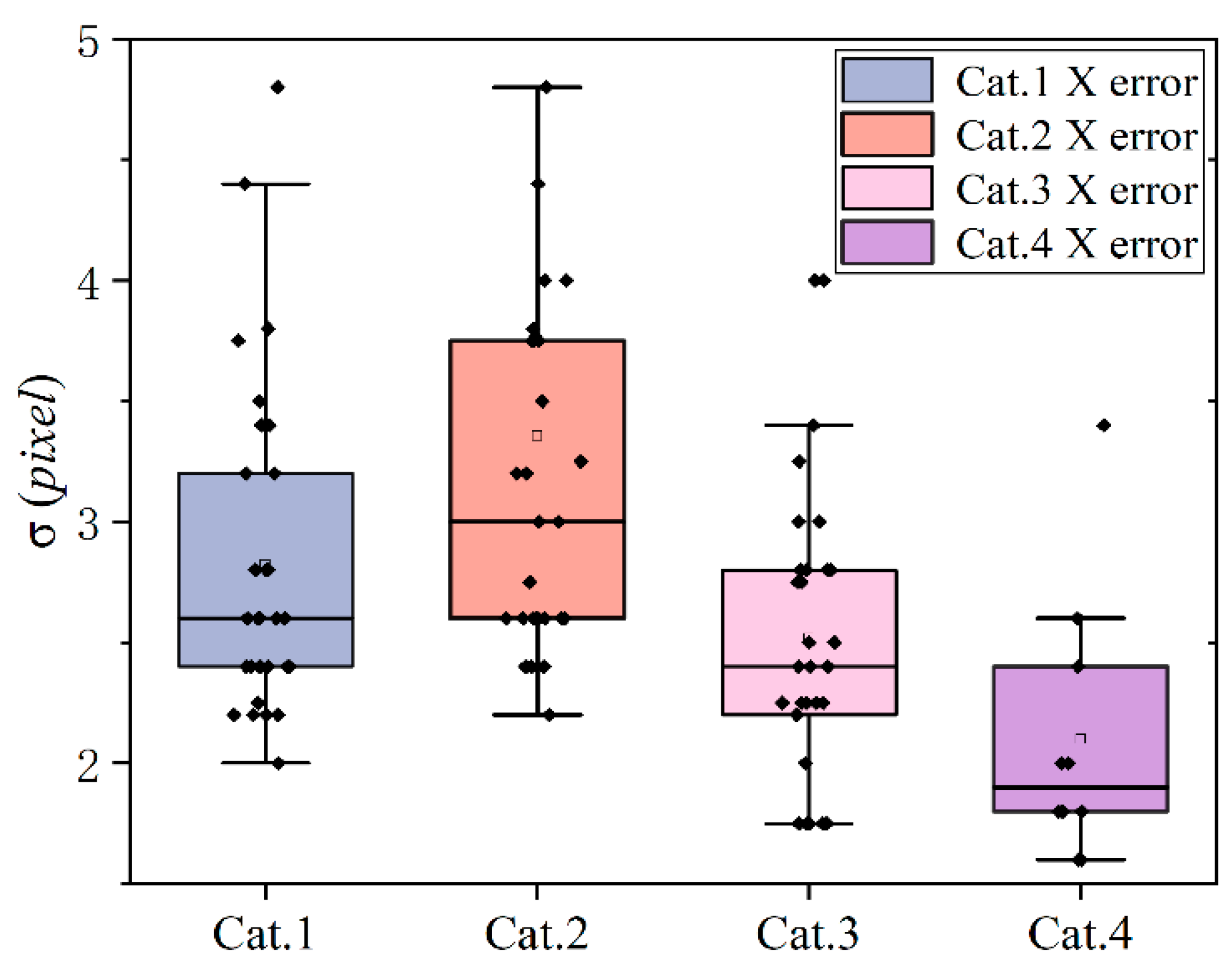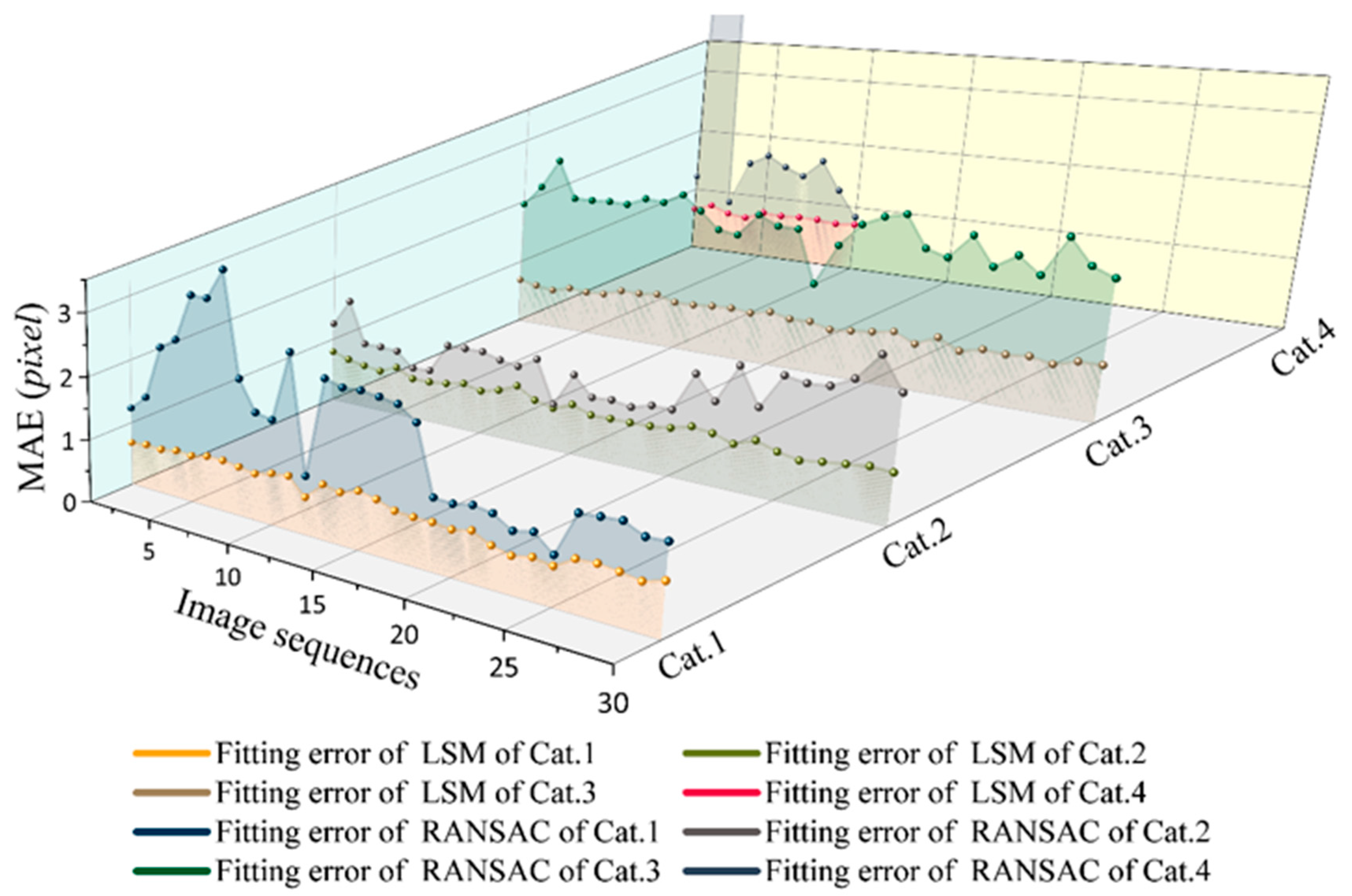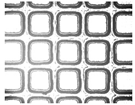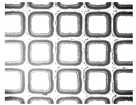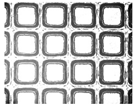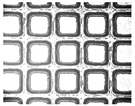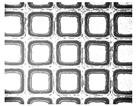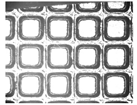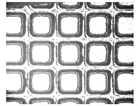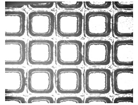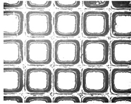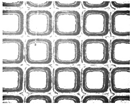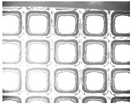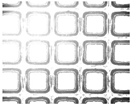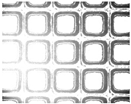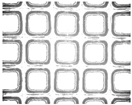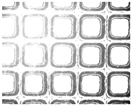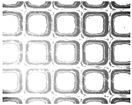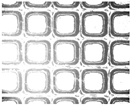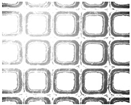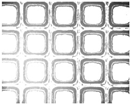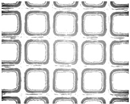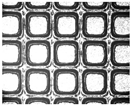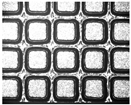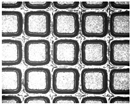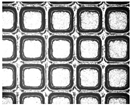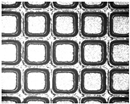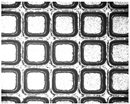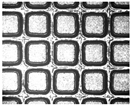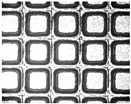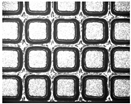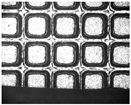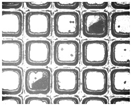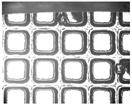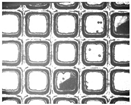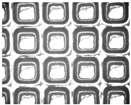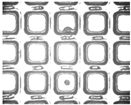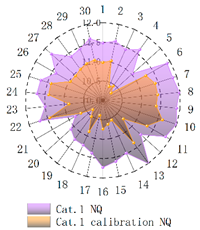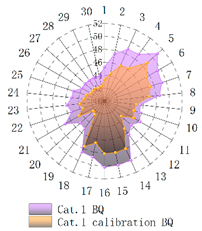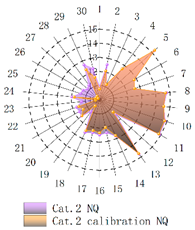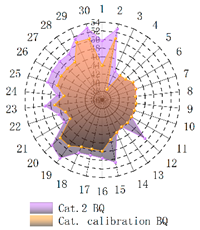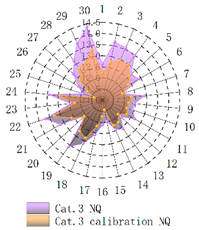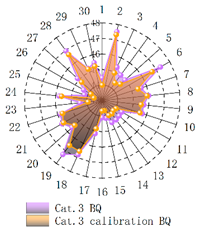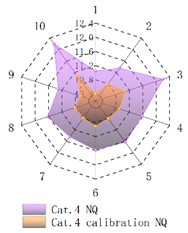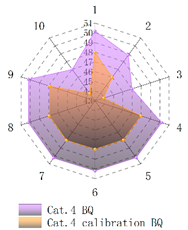1. Introduction
In the field of wafer cutting, the technology to determine the cutting path primarily includes mechanical structure positioning and microscopic image processing. The mechanical structure determines the wafer street by adjusting the spacing, which is simple and time-saving. However, the mechanical structure has low positioning accuracy and easily damages the chip due to positioning deviation [
1]. Micro-image processing technology can find the wafer street and cutting path with high magnification, and the accuracy can reach the micrometer scale, but it requires high image quality and takes time. According to whether there is a Mark point or not, wafers are divided into two categories. When there is a Mark point on the wafer, the wafer’s attitude and street location information can be obtained by determining the position and rotation angle of the Mark point [
2]. When there is no Mark, the wafer’s attitude and street location are determined by determining the position and attitude of the chip region in the image, and then the cutting path is determined. Correctly locating the position and attitude of the Mark point or chip region is the prerequisite for determining the cutting path. Its positioning accuracy determines the accuracy of the cutting path. The higher the accuracy, the less likely the chip will be damaged, and the higher the yield of the chip production.
The number of Mark points on the wafer is mostly one or two. We use the
x,
y translation stage to find the Mark points and determine the rotation angle and street location of the wafer according to the position and attitude of the Mark points [
3,
4]. When there is only one Mark point on the wafer, the rotation angle of the wafer is the same as that of the Mark point. When there are two Mark points, the angle between the connecting line between the two Mark points and the horizontal direction is used as the rotation angle of the wafer. We repeatedly measure the rotation angle of the wafer and straighten it until the rotation angle is less than a certain threshold, and the street location is determined by the location of the Mark point (the Mark point is located in the center of the block). When there is no Mark point in the wafer, the wafer rotation angle and block position are determined by the chip area, or directly determine the block position in the image. Common methods for detecting the wafer rotation angle and cutting path include the template matching algorithm [
5], the contour edge detection algorithm [
6,
7,
8,
9,
10,
11], and the establishment of neural networks [
12,
13]. Qi et al. (2005) first smoothed the image, enhanced the image with histogram equalization, and finally determined the location of the chip region in the image with the Sum of Squared Differences (SSD) template matching algorithm. The edge detection algorithm mainly uses the Canny operator to extract the outline edge of the chip and uses robust statistics methods to eliminate outliers, reduces the impact of uneven edges on the chip location accuracy, and finally, uses a rectangle fitting algorithm to find the chip region 6 or obtain the maximum connected domain of the edge and calculate the four vertices of the detected rectangular box to determine the rotation angle of the wafer [
8]. Wang and Zhang (2021) used a convolutional neural network to roughly align the wafer, with an error of ±5°. Regression analysis was used when the fine alignment was performed. Before fine alignment, brightness calibration was required for the image, and then the slight difference in feature points between the two images was compared to derive the rotation angle of the wafer. Yu et al. (2021) proposed an improved U-Net convolution neural network method to directly determine the cutting path. To speed up the process, the image is down-sampled to one-quarter of the original image, and the location of the chip location is determined using the advantageous genetic Adaptive Genetic Algorithm (AGA) for the downsampled image [
14]. In contrast, the quadratic exponential function is used to smooth the histogram of the image and obtain the binary image, distinguish the street and chip region, and calculate the cutting path according to the binary result [
15]. Current algorithms focus on finding the edges of chip regions and determining the chip region and Mark point locations using template matching algorithms, which only exploit the geometric features and grayscale variations of the image and have high requirements for image quality. The neural network algorithm has high accuracy in street recognition through training, but it requires a large number of images to train different specifications of wafers, which is time consuming.
In summary, the existing methods used to determine the cutting path based on the wafer image have the following problems: (1) The wafer images processed are all taken under a high magnification optical system and there is a great deal of pollution in the street and chip region. Although template matching and contour edge detection can determine the location of the chip region, it is very difficult to accurately determine its chip region with high accuracy. (2) When the neural network is used to find the street directly, it requires a lot of training and takes a long time. Moreover, the interference factors of the street region in each image are different, and the recognition accuracy is disturbed. (3) Only the contour features of the chip region in the image are used, and no other useful information about the chip region is used.
In order to solve the above problems, this paper proposes a cutting path planning algorithm for the chip region in the wafer image. First, the tilted wafer is aligned, and then the brightness calibration of the image is performed on a global scale. The chip region and the center of gravity position are determined by calculating the frequency domain correlation between the template and the target image, and the interlayer position is found in the determined chip region. The interlayer is used as an auxiliary to positioning to determine the cutting path. The accuracy of real-time performance and adaptability between different state images using the chip interlayer as the auxiliary location to determine the cutting path is verified by experiments. The innovation of our method is mainly reflected in three aspects: (1) The proposed image brightness calibration algorithm can improve image quality. Compared with the traditional image enhancement and grayscale transformation algorithms, when the illumination changes significantly, it can better improve the overall grayscale distribution of the image. (2) A template matching algorithm based on frequency domain correlation is used to find the chip region, which enhances the dependence on the frequency domain characteristics of the chip region and reduces the chip region pollution and other factors’ interference. (3) On the premise of determining the chip region, the interlayer is used as an auxiliary to positioning, and the cutting path is not affected by the geometric shape change of the chip region. The determined cutting path is distanced from the chip region to improve the yield of wafer cutting.
The remainder of this article is organized as follows: In
Section 2, the materials and methods are designed; in
Section 3, the experiments are carried out; in
Section 4, the discussion is carried out. In
Section 5, the conclusions are derived.
3. Results
In this section, the effect of brightness calibration is analyzed through experiments to determine the position accuracy of the chip area and the accuracy of the cutting path. The system in
Figure 1b is used in the experiment. The magnification of the optical system is known to be 50×, and the actual chip size is 35 × 35 μm, the camera resolution is 1024 × 1280, and the size in the chip image coordinate system is 250 × 250 pixels.
The experiment randomly adopted 30 images of Category 1, Category 2, and Category 3, and 10 images of Category 4.
Table 1 shows 10 images selected from the previous three categories and 5 images selected from Category 4.
3.1. Comparison of Template Selection
When the chip region is seriously polluted, templates of different sizes will produce different matching results. In order to compare the matching effects, three templates of different sizes are selected in a chip region, and a limit template Tem.4 is used to determine the range of the interlayer. Cat.4_1 in
Table 1 is selected for the test image. The matching result is shown in
Figure 8.
Figure 8 shows that two contaminated chip regions are successfully matched using the Tem.1 template, the incomplete chip regions on both sides of the image are also successfully located, and the interlayer is within the determined search range (the area between the blue frame and the pink frame is the search range of the interlayer). Tem.2 matches the lower contaminated area, and the upper contaminated area matches incorrectly. Tem.3 matched incorrectly in both contaminated chip regions, where the pixel sizes of Tem.1, Tem.2, Tem.3, and Tem.4 are 270 × 270, 250 × 250, 225 × 225, and 169 × 143, respectively. The pixel size of the chip area to be matched is 250 × 250. Therefore, when some street areas are covered around the selected template, the matching accuracy can be improved.
Template Tem.1 is used to calculate the cutting path of image Cat4.1, the determined interlayer position (marked with discrete points), the fitted straight line, and the finally determined cutting path, as shown in
Figure 9. Due to the pollution in the street, there are discrete points that are wrongly located in the polluted area, but they are removed during fitting. The determined fitting lines are close to the interlayer, and the cutting path is located in the center of the first street, far away from the chip region, which can ensure that the chip will not be damaged during cutting.
Table 2 summarizes the
x-coordinate of the center of gravity of the chip region matched by using Tem.1 and calculates the deviation of the
x-coordinate of each column of the chip. The position of the chip region is located in rows and columns. The matching deviation of each column is less than or equal to 5 pixels. It is normal in the conclusion in
Section 3.3 and meets the use requirements.
Table 3 shows the MAE (Mean Absolute Error) evaluation results of the fitted straight line on the left and right sides of each column of chip regions. The evaluation results are all within 2 pixels, 87.5% of the results are within 1.5 pixels, and the average error is 1.24 pixels, achieving a good fitting effect. The evaluation results show that the improved RANSAC algorithm effectively removes discrete points.
3.2. Evaluation of Brightness Calibration
Experiments used 100 images for brightness calibration, and the results were analyzed qualitatively and quantitatively. By directly observing the contrast between the chip and the street in the wafer image before and after the brightness calibration, we observed whether the wafers in different categories are similar after the brightness calibration. Except for special circumstances, the gray distribution of the chip region should be similar.
Figure 10 shows the contrast of image brightness before and after calibration in different categories.
By directly observing the wafer image before and after brightness calibration and the gray distribution map, it can be found that the chip region in the image after brightness calibration is more prominent, more distinct from the street, and the gray distribution is roughly the same, so the matched chip position will be more stable. The brightness of the wafer image in category 3 is not significantly improved after the calibration, and the black patches in the chip region of the image in category 4 are enhanced.
In order to verify whether the image quality improved after calibration, Brisque (BQ) and Niqe (NQ) [
25,
26], two non-reference image quality evaluation functions, are used for quantitative analysis of images before and after calibration. The smaller the evaluation values of the two methods, the better the image quality. The comparison of NQ and BQ quality before and after the brightness calibration of wafer images in different categories is shown in
Table 4.
As shown in
Table 4a,b,g,h, since the brightness of the image of Cat.1 and Cat.4 is uniform, it is easy to distinguish between the background area and the feature area, so the image quality is significantly improved. As shown in
Table 4c,d, when the NQ evaluation function evaluates the image of Cat.2, the image quality is not significantly improved, while when the BQ evaluation function evaluates the image of Cat.2, the quality of the fourth to ninth images is not significantly improved. This is because, in an overexposed environment, the background and feature areas are relatively close, and pixel values are clustered in a small range, which cannot effectively improve the image quality. From
Table 4e,f, we can see that in the images of Cat.3, the image quality has only slightly improved. Since 82% of the image quality increased after brightness calibration, 18% of the image quality did not improve. In a too-dark environment, the background area and feature area of different images are different, and the quality is also uneven, which makes it difficult to improve image quality. Since most of the wafer images of Cat.1 are collected during wafer cutting, and only a small part of the wafer images of other categories are collected, brightness calibration can effectively enhance the characteristic area of the chip and adapt to different brightness environments.
3.3. Analysis of Positioning Error in the Chip Region
The brightness difference of wafer images, defects in chip regions, shape changes, and other factors have a great impact on the matching results of the chip. We selected 100 wafer images proposed in the paper to evaluate the error of the matching algorithm. Because the chip position in each wafer image is not fixed, the final matching result is used to count the error. In
Figure 3, we define the matching error
σj of the chip in column
j:
σj is the difference between the maximum value and the minimum value of the x-coordinate of the wafer in column j. The error should be greater than or equal to the error in the x direction between the calculated matching result and the accurate position when the exact position of the chip is known.
Table 5 shows the average error of images after brightness calibration. The average matching error of the wafer images of cat.1, cat.2, and cat.4 is within 3 pixels. The average error of the image of cat.3 is 3.36 pixels because of two outliers. An error of fewer than 4 pixels accounts for 94% of the total image, and an error of more than 5 pixels accounts for only 2% of the total image. Finally, the average error of all images in the x direction is 2.82 pixels.
As shown in
Figure 11, the accuracy of the enhanced image is mostly stable within 4 pixels, and only 2% of the images have a large positioning error deviation, which is greater than 5 pixels. All of them appear in the too-dark image, but the deviation is less than 8 pixels. The center of gravity and area of the chip obtained by template matching are prepared for finding the interlayer. This experiment proves that the matching accuracy obtained can determine the area where the interlayer is located, even when the matching deviation is 8 pixels, and it also meets the requirements for determining the area where the interlayer is located.
3.4. Accuracy and Stability Evaluation of Cutting Path
This section verifies that the fitting accuracy of the improved RANSAC is better than that of the LSM through experiments. The higher the fitting accuracy is, the more accurate the position of the interlayer is, and the closer the final positioning cutting path is to the ideal position. The experiment used 100 images. We use the Mean Absolute Error (
MAE) [
27] to evaluate the fitting accuracy of cut paths in images.
where
m is the number of discrete points,
YReal is the real coordinate value, and
YPred is the predicted coordinate value. The smaller the calculated MAE value, the higher the fitting accuracy. The average value of the MAE of the fitting line in the image is taken as the fitting accuracy of this image. As shown in
Figure 12, different categories of images use RANSAC and the LSM to fit the precision comparison of discrete points.
It can be seen from
Figure 12 that the fitting accuracy of the improved RANSAC is higher than that of LSM, and the fitting accuracy of RANSAC is stable. The MAE value evaluated fluctuates within 0.5–0.9 pixels, with little fluctuation. LSM fluctuates greatly due to the influence of abnormal points. When processing the Cat4 image, an exception occurs. The deviation distance is up to 20.18 pixels, which will locate the wrong cutting path. When the distance between the discrete point and the fitting straight line is less than 1 pixel, it indicates that the influence of the abnormal discrete point is removed, the reserved discrete point can be accurately positioned to the interlayer, and the fitting straight line is tangential to the interlayer. The cutting path located by the fitting straight line will be distanced from the chip and located in the center of the street, ensuring that the chip will not be damaged during the cutting process.
4. Discussion
To verify the accuracy and stability of the template matching algorithm used in the paper, we compare it with SAD and NCC matching algorithms, evaluate the number of chips matched, matching deviation, and running time, and verify the adaptability, accuracy, and real-time of the template matching algorithm. The images in
Section 3.1 are used as experimental samples. When the deviation exceeds 10 pixels, the area where the interlayer is located cannot be guaranteed due to variations in the shape of the chip, resulting in cutting tracks with deviations in position and angle.
The Sum of Absolute Differences (
SAD) traverses the entire target image and calculates the absolute difference between the sub-image and the template image. The smaller the absolute difference, the more similar it is.
where,
S is the target image and
T is the template image.
The Normalized Cross Correlation (
NCC) is similar to the SAD in that it uses the gray level of the target image and template image to calculate the matching degree by the normalized correlation measure.
where
E(
Si,j) and
E(
T) represent the average gray value of the search area and template at (
i,
j), respectively.
To ensure the accuracy of the street location, when column
j in the wafer image locates only one chip, it is considered that this column does not match the chip because the deviation of the cut path determined by only one chip is large. The adaptability of the algorithm is determined by processing the number of chips matched in different wafer images and the matching accuracy rate. The more chips are located, the better the adaptability of the method. The definition of accuracy is the same as that in
Section 3.1. The difference between the maximum and minimum value in the
x-direction coordinate position of each chip column is obtained, and then the mean value of the difference in each column of an image is calculated as the positioning error of the image. The smaller the average difference, the more accurate the positioning is. Real-time is defined as the average processing time for each wafer image in different categories.
Table 6 shows the comparison of the number of SAD, NCC, and proposed method matching chips with the correct rate, deviation in the X direction, and processing time.
If too few chips are matched, there will not be enough chips on either side of the street to locate the cut path.
Table 6 shows that the matching accuracy of the proposed method is the highest, the matching results are all correct, and the number of chip regions matched in the wafer images of Cat.2, Cat.3, and Cat.4 are the largest. Although the SAD matches the largest number of chips in the image of Cat.2, the accuracy is less than 90%, and as the number of matches between this method and SAD is less than 1, the NCC method has the worst effect. In terms of accuracy, when using the proposed method to process images of Cat1 and Ca2, the deviation in the X direction is the smallest. Among the image processing results of Cat3 and Cat4, the deviation using the SAD is the smallest, but the number of chips matched by the SAD is also less than that of the proposed method. In terms of real-time, the running time of the proposed method is stable within 0.7 s, while the speed of processing the image of Cat.4 is slightly slower and stable at 1.1 s. In the experiments in
Section 3.1, the fitting accuracy of Cat.4 is the best. The processing time of SAD and NCC algorithms is 44.5 s and 195 s, respectively. This is because the selected template is large and the traditional method needs to traverse the target image to obtain the evaluation value of each position, so the processing speed is slow and does not meet the real-time requirements. The proposed method is several times or even hundreds of times faster than the traditional method. It should be noted that the processing time of this method is the time to determine the cutting path, while the two traditional methods only match the time.
5. Conclusions
The cutting path planning of wafer images without Mark points proposes a cutting path localization algorithm using the interlayer as an auxiliary location. In the calculation process, the grayscale distribution rule and self-characteristics of the image are fully considered. Due to the factors of the working environment and wafer quality, the grayscale distribution of the image is not uniform, and the interlayer is not prominent. Therefore, the image is pretreated by brightness calibration. By analyzing the frequency domain characteristics of the chip region, the chip position is determined by using a template matching algorithm based on frequency domain correlation calculation, and the wafer cutting path is determined by searching for the interlayer. Through the positioning experiment of the cutting path, the following conclusions are obtained:
- (1)
Through brightness calibration of wafer images in different categories, the gray distribution of different wafer images is roughly the same, highlighting the frequency domain and interlayer of the chip region, improving the quality of images and the accuracy and stability of matching results.
- (2)
The experimental results show that the template matching algorithm based on frequency domain correlation is better than the traditional template matching algorithm in terms of matching accuracy, stability, and real-time performance.
- (3)
Removing the abnormal discrete points marking the position of the interlayer can improve the positioning accuracy of the cutting path. Before and after removal, the fitting accuracy is increased by approximately 150%, and the slope of the fitting line is more stable.
- (4)
Using interlayers as an auxiliary location can reduce the impact of chip positioning results. The determination of the cutting path by interlayers on both sides of the street ensures that the determined cutting path is located near the center line of the street and away from the area where the chip is located.
For wafers of different specifications, one must select the corresponding template once. For different categories of wafer images, the corresponding cutting path planning algorithm can be designed, and a more detailed classification of wafer images can be carried out. In addition, the calculation time of the cutting path can be further reduced by reducing the search area of the interlayer.

